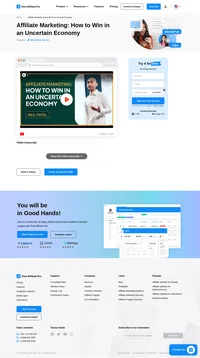Online sales are a growing opportunity for nearly every market, and you want to capitalize on those potential sales. So, you’re looking into new avenues and are considering e-commerce affiliate marketing programs designed to expand product reach and lessen your workload.
It can be a big win whether you own the inventory being sold or want to be a storefront for someone else’s cool products. But, getting an affiliate marketing right is tough. You need to understand products, audiences, and what the other person in the relationship is going to do.
So, we’re breaking it down to explain what affiliate marketing is, where your business fits in the equation, software things to know, and how to make it work best for you. Let’s dive right in now.
What Is Affiliate Marketing?
Affiliate marketing is when a store or product creator partners up with either smaller companies or those in different niches (the affiliate), asking them to promote the product to their audience. In return, the affiliate gets a percentage of revenue from the sales they generate. Affiliate marketing is common for both large, established brands and new e-commerce entrepreneurs looking to get their products in front of a new audience or a special niche.
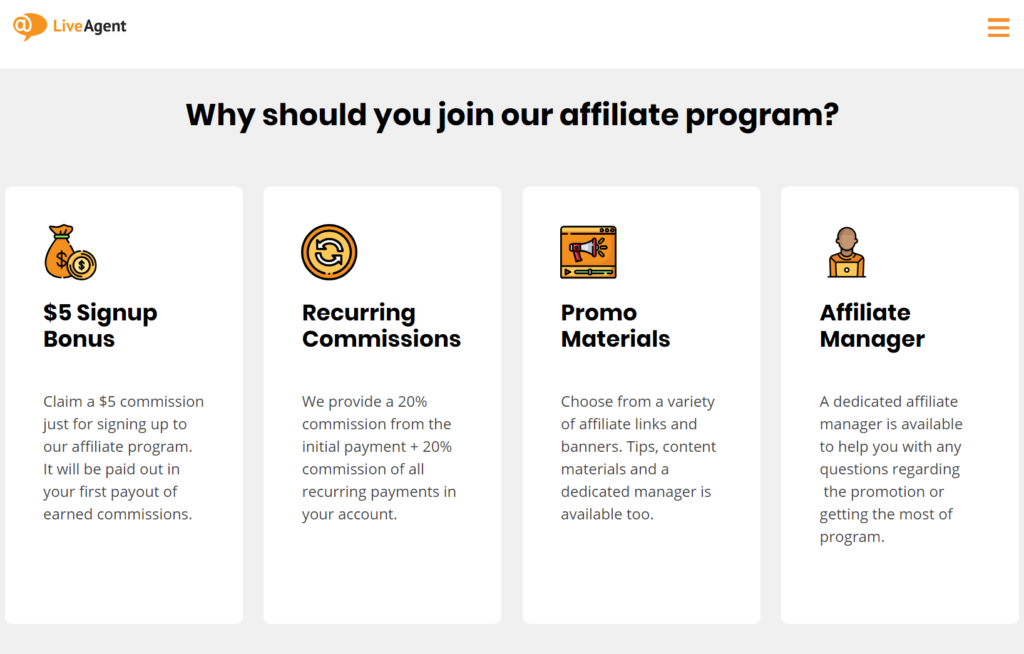
The actual marketing side of things can look very different. Affiliates can sell things from others directly with an affiliate storefront, they can include links with affiliate codes in media and blog posts, and even run ads with those links so they get a cut via PPC sales.
It’s also likely that you’ve heard an affiliate marketing campaign on your favorite podcast. When someone tells you to go to a certain store and enter code at checkout, they’re giving you their affiliate code and earning based on your purchase.
You can get in on the action as being either the store offering payments or the affiliate selling for someone else. They can both help your e-commerce efforts, just in different ways.
Selling for Others: What’s an Affiliate Store?
Some e-commerce operations are almost entirely affiliate marketing and sales. When you arrive, whether through an ad, Instagram post, or search, they present you with a series of products, looking ad feeling like any other e-commerce store.
Often, you won’t know the difference until you click on a product and see that the “Buy Now” button has been replaced with something else. Depending on the store, you might see them directly mention the original seller by name or get a button telling you that you can buy it from their partner at a certain price.
In general, these operate as many other e-commerce stores do. If you’re familiar with the concept of drop-shipping, then this is an even simpler version of running that kind of operation.
What’s becoming a bit fascinating is that some brands are focusing their marketing entirely on affiliate programs. Canopy is one of the best examples, because its tagline is “Amazon, curated.” Every call-to-action mentions Amazon — even the ones asking you to sign up for the Canopy service.
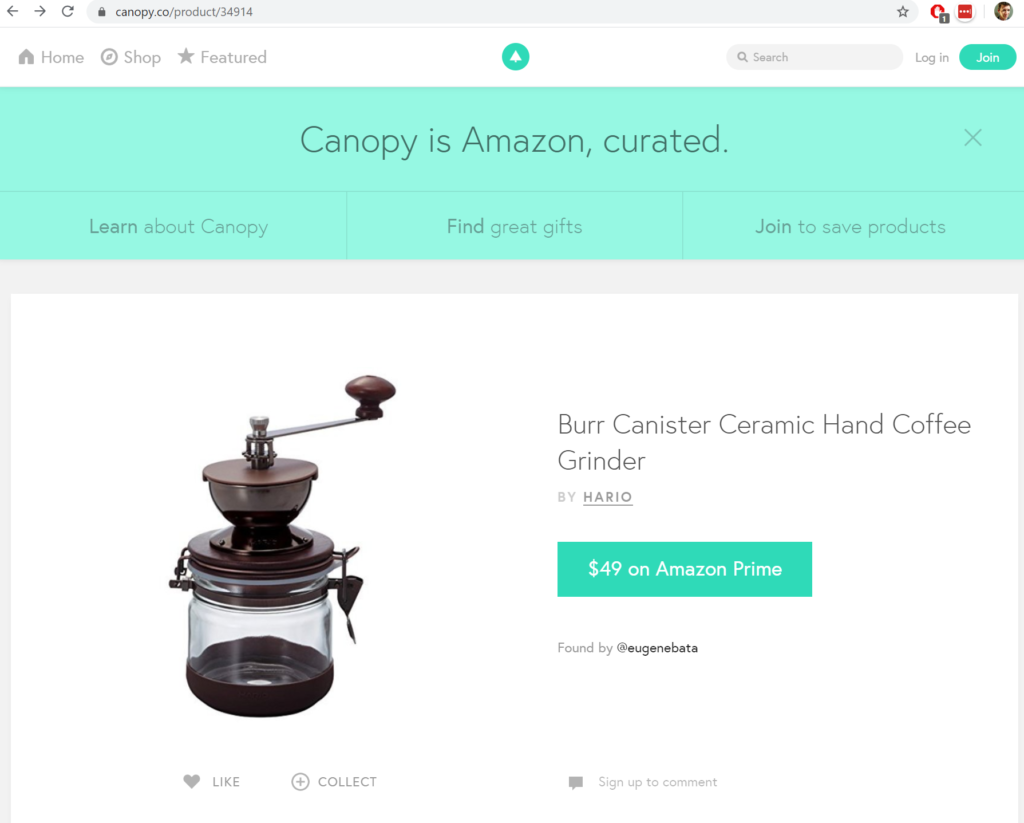
Clicking on a product to buy it shows its price specifically on Amazon Prime and clicking through takes you to the Amazon page in a new tab. It’s clean and smart and a great way to generate revenue without having to manage stock, worry about fulfillment or do anything beyond e-commerce affiliate marketing and site management.
If you sell for someone else, be sure to ask about their restrictions and what added benefits you’re allowed to target. You might be able to kit products together, increasing sales values and helping your partner find a brand new way to grow their business too.
Having Others Sell for You
If you’ve got products that you want to reach more eyeballs, consider developing your own affiliate program. Here, you’ll find a solution that helps you manage affiliates and set rules for how they can market and link to your products. (See some hints for software selection in the Finding an Affiliate Program and Platform section below). For it to be beneficial to your e-commerce store, it’s time to find a niche. Affiliate networks can help you do this by pointing you to companies and influencers (whether that’s via blog, Facebook, Instagram, etc.) that have an audience like the one you want.

You can then set the rules for how people are paid and start pitching collaboration with potential partners. When someone agrees, they’ll start running ads for your goods and give you access to a pre-built audience. If you’ve got a robust customer base already, consider opening your affiliate program to customers and have people who like you the most start doing some selling for you too!
Here’s a great piece for helping you determine what an ideal niche partner looks like, and how to avoid some mistakes that turn off potential partners.
Weighing the Pros and Cons
Whether you’re coming at this from the product owner or the affiliate perspective, there are a few top pros and cons to consider in the space. The best news is that when one side makes it easier, both companies benefit.
Pros
- Affordable: Neither company needs to pay for full marketing, business rollout, or even store improvements. Each group gets to focus on its own piece of the overall business. Affiliates will do marketing and promotions, while product owners handle logistics and fulfillment.
- Name recognition boost: You get to benefit from the two names in these plans. Both brands (hopefully) have an audience and you’ll leverage each for the benefit of your sales. Including both names in marketing, elements help you show up better in search and other results.
- Better reach and potential: By working with an affiliate program, you get better access and reach. For the product owner, it means your products can live next to related items and open up to new markets. For example, your water bottle initially designed for bikes may now get to live next to kayaks (a popular market but you don’t need to learn it when your affiliate knows it). For affiliates, you get a greater set of products and can generate more sales and higher average order values. You’ve got more opportunities for a sale because you can reach someone interested in one product but not necessarily ready to buy it with another offer or two.
- Lower service requirements: The companies split some customer interactions and management, helping you lower the barrier to sale on your side of things. Affiliates serve to educate and engage customers initially, getting them excited by the same. Product owners focus on the sale aspect and service or support if there’s a deeper question or shipping. You reach more with less.
Cons
- Customers have more steps: Depending on how the software and process works, your customers may face additional actions needed to buy. They find the product through one partner and learn some about it, but then they will need to click through to a new site to buy. They may also need to click through to learn information vital to purchase, from sizing and color availability to shipping costs or other requirements.
- Less-predictable sales: No affiliate store has guaranteed sales. So, you might be investing time and money into something that doesn’t work or isn’t a big reliable. When affiliate programs aren’t very diverse, they can suffer. You might also see some shut down if they don’t meet the nexus tax legislation requirements — many remote sellers and affiliates have minimum sales thresholds based on state.
- Margin reductions: You’re growing sales but splitting it between multiple partners. Each side is making less than they would by selling their own products solely. So, at some point, there might be a revenue loss during these sales, especially when search ads and related efforts from both affiliate and product owners are competing for the same eyeballs.
- Time to review: Everyone has more work to do! You’re looking at additional software, sales channels, testing buttons, and reading reports. There will be some automation and other manual efforts to keep product descriptions correct, manage reviews and user-generated content, new images, and more. It’s a time investment like any other channel. Don’t expect this to be a no-effort way to generate money.
Finding an Affiliate Program and Platform
This post lives on the Post Affiliate Pro blog, so when you’re looking for an affiliate program, we recommend you start here because it makes them more complicated elements of tracking, reporting, advertising, and setting commission types easier when you want to create your own affiliate program.
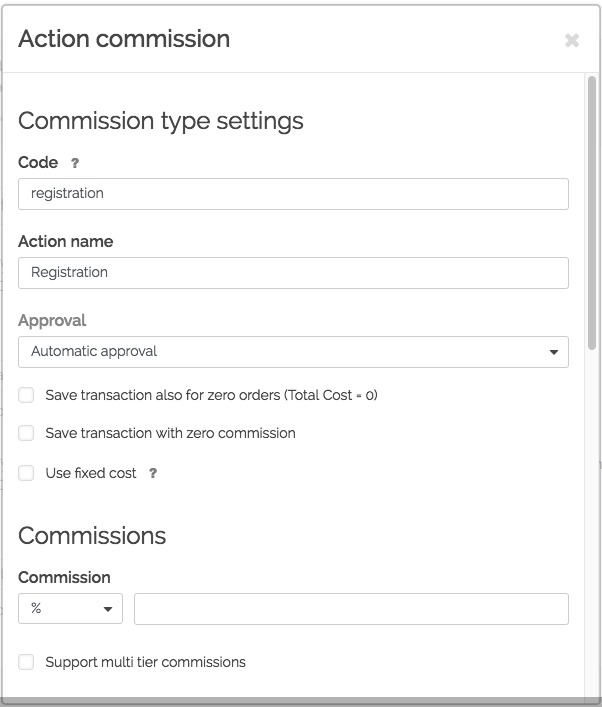
The big thing to look for is if the interface is easy for you to understand if it supports the payments you need, and that it makes managing merchants and affiliates simply. If you’re looking to grow in a crowded field or want to make use of both merchant stores and reviewers or Influencers, look for tools like Post Affiliate Pro that allow you to split commissions among these groups, that way everyone who contributors to a sale are rewarded appropriately.
These tools allow you to monitor and manage affiliate links, get access to tracking reports (for sales, impressions, clicks, and other actions), generate and share promotional items like banners and emails, and even set how you’re paying these partners.
Review the tools that help you manage affiliates and look for plugins and other services that let you broadcast that you have the program, link up with more affiliate networks, and monitor audiences to help ensure you’ve got the right mix of partners.
For those of you looking to sell, you’ll want to find your own affiliate programs that give you access to companies that want to reach your audience. This might mean you look for services that aggregate links and opportunities for you or contacting stores and companies directly to try and sell their products. Think both large and small to tackle Amazon or the eBay Partner Network and individual brands like New Balance or iTunes.
Every platform has its own unique requirements, as do many retailers, so you’ll want to start slow and build gradually. Adhering to rules is the easiest way to get paid quickly and reliably.
5 Tips to Succeed in Your Marketing Efforts
1. Create a Narrative
You want to find the right niche for your affiliate programs. Product sellers need to choose people who will help them reach a novel audience. Affiliates want to do the same, and curate their content to that specific audience.
Make this easier by building a narrative around the product and store. Product owners should be targeting a lifestyle, hobby, activity, work, or similar item. Carve out your uses and how you help customers. Affiliate stores should then leverage those benefits to a specific narrative around a target audience.
So, the product owner might share how their dog grooming kit makes it easier to trim hair for puppies. Affiliate stores can take that and then target different niches, such as helping busy puppy-parents who don’t have a lot of time, targeting apartment complexes if it makes cleanup easier, or reaching out to groomers who want to speed up haircut per hour to benefit their business.
Each partner should summarize their positioning as best they can, making it easier for everyone to use those benefits and elements in campaigns.
2. Be Selective
Product owners and affiliates should both like each other’s businesses. That means finding partners who share your brand values and desires. If competing on price point is your big marketing effort, then you’ll struggle with an affiliate marketing program where your partner is expensive and focuses on detailed, involved products that are slow to sell.
Your reputation will be impacted by how well your partner performs. Often, this is a bigger concern for the product owner. Their affiliate program will have significant costs and opening it up to everyone who wants in will mean your time for management hours (not spent selling) scale. It’ll be extra work and you want it to pay off in terms of sales.

Pick partners who you would like to be a true salesperson for you — and affiliates should focus on products they really enjoy or think can sell well by helping people. Review everything you can about sales processes and tactics while inviting the other company to review you from management and growth to how you wow customers with the way package your products.
Selectivity keeps you from spreading too thin and struggling to meet requirements.
3. Minimize Distractions
Now, let’s talk about marketing! To be profitable on both sides of the affiliate equation, you need people to buy! They’ll have to land on the affiliate storefront, find some value, click-through, and be primed and ready to buy once they hit the product maker’s page.
To do that, marketing and websites from both companies need to be educational, supportive, and free from distractions. Usually, this means it’s best to limit links to outside websites and elements on your sales pages. Show a carousel of similar products but consider keeping everything in the same product manufacturer family grouped together. The affiliate also tends to not need contact information on each page or CTAs direct for their own business.
Banner ads and flashy widgets can be compelling for a general e-commerce site, but they’ll distract on affiliate pages. They may also push people away if the site feels less than professional.
A few other tips include:
- Put your social accounts at the bottom of pages or in the footer.
- Make reviews load on the page, whether directly or via a carousel.
- Don’t go off-page for FAQ elements like sizing charts
- If you want to provide customer service links, send someone to the product owner’s page and tell them where to click
- Keep sales pages clean and clear with images and video only specific to that product
Best practices apply to both affiliate pages and the product landing pages from owners. You want someone to feel like it’s a seamless step to click and buy, instead of getting distracted by pop-ups, banners, and other things in the step or two before checkout.
4. Don’t Hide
Be upfront about the affiliate program on both ends. Hiding parts of the process can harm sales and conversions, making things worse for each partner. The affiliate store and its marketing should note affiliate links and relationship exists.
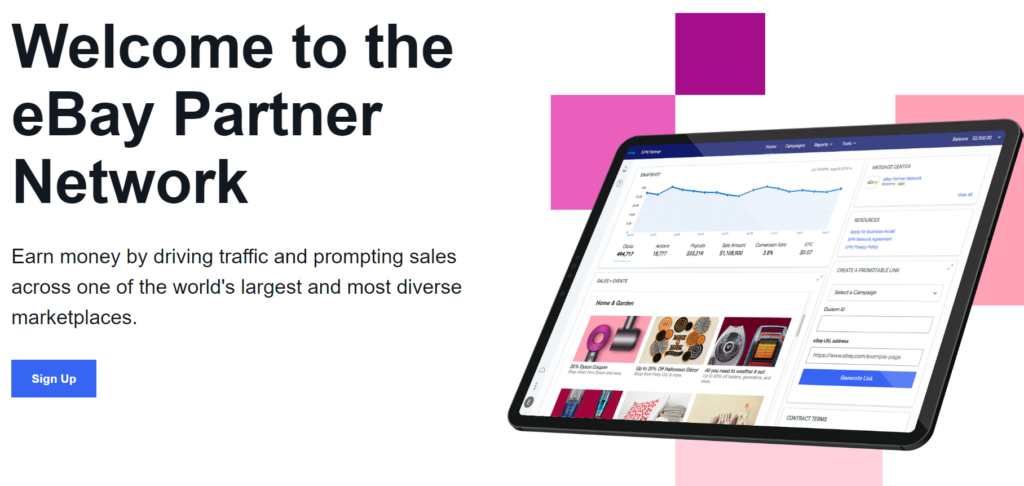
For the product owners, mandate some of this information so your customers don’t think they’re being duped. You want people to trust you and not associate your brand with fraud or theft. If someone is a smart shopper and looks at multiple locations for products, they’ll probably realize who is an affiliate and who isn’t before they click to buy. If you’re no honest about this in a way that’s easy to see, they will likely wonder what else you’re hiding.
At the same time: there are legal requirements for noting affiliate links and marketing. These will differ by where you live, but there are big, clear rules for affiliate and network marketing.
For example, in the U.S., the FTC has fined people who don’t disclose this information well enough. Here’s an important note from the FTC guidance:
“If it’s clear that what’s on your site is a paid advertisement, you don’t have to make additional disclosures. Just remember that what’s clear to you may not be clear to everyone visiting your site, and the FTC evaluates ads from the perspective of reasonable consumers.”
5. Regularly Review Ads and Tracking Systems
Ecommerce affiliate marketing works best when the two partners are in lockstep. This means agreeing on how products are displayed, sales prices, margins, information to show, what not to show, and which partner gets to provide what information.
Breaking this chain can lead to mistrust and lost payments, or lost sales if customers see a disjointed sales experience.
It’s up to both partners to keep reviewing their work and their partners, ensuring that everything is as it should be. Affiliate marketers need to know that ad campaigns and sales pages aren’t overpromising or delivering incorrect information — an especially large risk if someone is paid based on traffic delivered instead of final sales, or if they’re paid for getting someone to sign up for a free trial. Affiliate sellers need to click through pages to ensures things aren’t broken and ask for audits of the affiliate tracking platform to be sure they’re getting credited and paid appropriately. At the same time, it’s smart to check your partners’ other affiliate work to make sure you’re offering customers the best deal for a product.
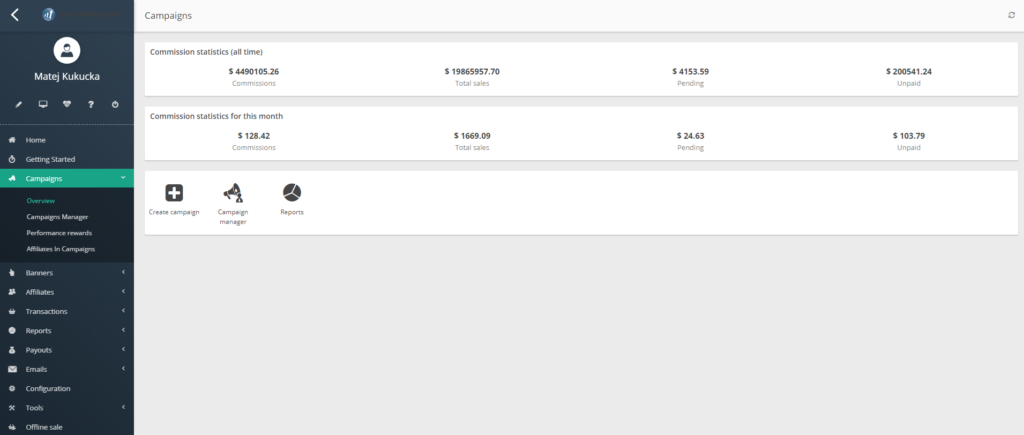
Transparency with each other is just as important as transparency with customers. If someone feels shady on either end, it might be time to walk away.
Wrapping Up: Make Margins Work for Everyone
Affiliate programs that don’t provide decent sales or rewards just end up being a giant pain. They’ll quickly devour your time and effort that could be spent generating better margins and other sales. So, work hard to ensure the margins work for everyone.
For your affiliate marketing pros, that means adopting software and setting payment rates that make it worth the time of influencers and storefronts. Make your tracking transparent and information easy to access so they can focus on selling instead of bombarding you with questions.
For sellers, stick to e-commerce affiliate marketing efforts that you trust. Get the details you need and solutions that work right for your business. Choose products that fit your niche and audience. When you start doing well and want to shift more resources to a specific product lineup, contact that company and discuss how to improve your relationship. When you do better, they do too. Make sure you feel rewarded for your hard work.
It’s like any relationship: things only go right if both partners are happy.
Jake Rheude
Share this article
How to Create an SEO Affiliate Marketing Strategy
Explore how to effortlessly boost your online presence with SEO affiliate marketing. Learn essential tips for success, including the power of long-tail keywords, and discover the benefits of upfront investment. Optimize your affiliate marketing strategy with trusted tools like Post Affiliate Pro, and start earning without the hassles of product creation. Unlock the potential of SEO-driven traffic and maximize conversions today!
How to Promote a B2B Affiliate Program in 2025 [on no budget]
Discover how to effectively promote your B2B affiliate program in 2024 without a budget. Learn innovative strategies like automated marketing, offering valuable incentives, networking, and leveraging social media to grow your business and gain affiliates effortlessly. Unlock the potential of your affiliate program today!
Affiliate Marketing: How to Win in an Uncertain Economy
Discover powerful strategies to excel in affiliate marketing during uncertain economic times. Learn how to adapt to price-sensitive consumers, leverage live social media promotions, partner with influencers, and gamify shopping experiences to boost sales and customer loyalty. Unlock the full potential of your affiliate efforts and thrive amidst economic challenges.
How to optimize your affiliate marketing campaigns for optimum performance
Discover actionable strategies to enhance your affiliate marketing campaigns for optimum performance. Learn how to analyze data effectively to boost traffic, improve content, refine offers, and optimize landing pages for better conversions. Uncover the secrets to successful affiliate marketing and start achieving your financial goals today!
How to Use Customer Success Data for Your Affiliate Campaign
Leverage customer success data to enhance your affiliate campaigns! Discover strategies to identify top customers, create personalized landing pages, and automate efforts using data science. Transform loyal customers into your best marketers and drive more leads for your SaaS business. Uncover the metrics that matter, from Lifetime Value to Net Promoter Score, and learn how to ensure your affiliate efforts are cost-effective and impactful. Visit now to boost your affiliate marketing success!
How To Use User-Generated Content To Increase Ecommerce Sales
Boost your e-commerce sales with user-generated content (UGC)! Discover how leveraging customer reviews, social media posts, and contests can enhance brand awareness, credibility, and SEO, leading to higher conversions and increased trust. Learn effective strategies to implement UGC and see your online sales soar.






